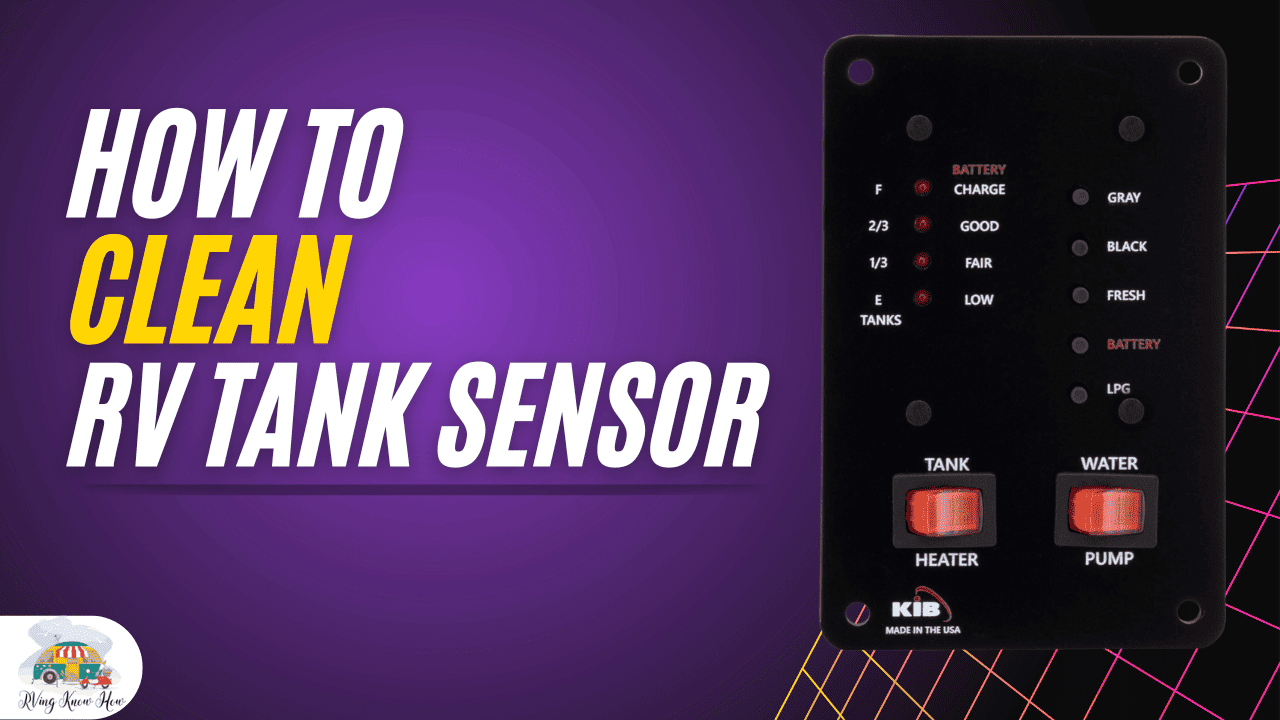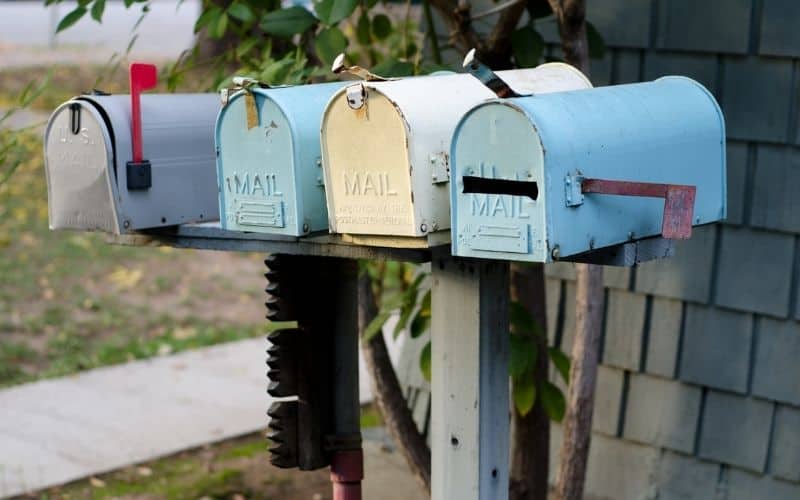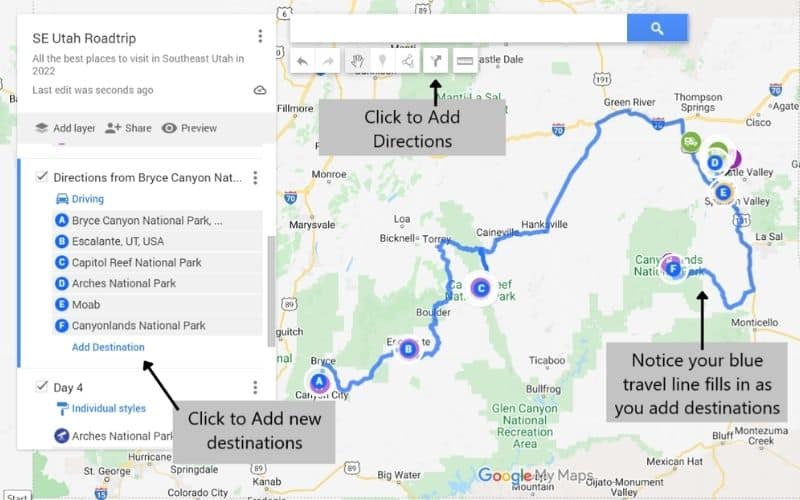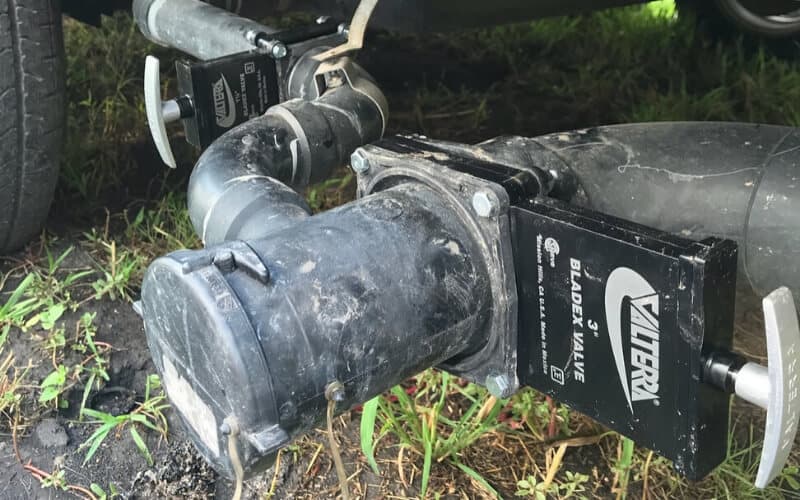You can use reliable tank cleaners or other methods to clean your RV tank sensors, including the ice and rock salt method and baking soda with vinegar solution. It is important to avoid a situation where your RV tank sensors start behaving inexplicably and make you speculate about the actual levels. However, if you find yourself in this situation, you’re not alone, and there is no need to fret if you encounter it.
RV tank sensors, which measure the amounts of liquid in an RV tank, are susceptible to reading errors because of residue buildup. Last winter, while parked in the stunning countryside, my sensor suddenly alerted me that my black tank was more filled than a Thanksgiving meal.
I’ll take you through easy but efficient ways to clean those RV tank sensors, dispelling common misconceptions and offering helpful advice to maintain your RV’s waste disposal system as dependable as your wanderlust.
What Is An RV Tank Sensor?

An RV tank sensor helps monitor liquid levels in the tanks of your recreational vehicle. When I drive down the road in my mobile home, the RV tank sensor tells me when it’s time to empty the tanks. It serves as the protector of my sewage sanity.
These sensors are typically fixed to the gray and black water tanks, which store your bathroom and kitchen waste. RVs might also be equipped with sensors to monitor things like the amount of freshwater, propane, and batteries.
While holding tank sensors are a subset, in a larger sense, RV tank sensors support monitoring various systems inside the vehicle for improved control and management.
What Is An RV Holding Tank Sensor

Despite their frequent interchangeability, the phrases RV holding tank sensor and RV tank sensor normally refer to different sensors utilized in the RV plumbing system.
An RV holding tank sensor especially refers to tools used to monitor the water levels in an RV’s holding tanks. The holding tanks‘ main function is to hold waste from the kitchen and bathrooms until it can be dumped correctly at a dump station. RV owners rely on RV holding tank sensors to precisely determine the fill levels and prevent overflows or unanticipated stops.
Although not all RV tank sensors specifically mention holding tanks, all RV holding tank sensors are RV tank sensors. To suggest that all thumbs are fingers, but not all fingers are thumbs is analogous. The setting and application rely on the RV’s particular monitoring requirements.
Both RV tank sensors and RV holding tank sensors notify you when it’s time to make a pit stop at the disposal station. These sensors occasionally become irritable and give false readings due to residue and muck buildup. Therefore, it’s important to thoroughly clean them often to ensure they’re at their best. After all, an enjoyable RV trip is made possible by a happy sensor!
How Does The RV Tank Sensor Work?
RV tank sensors operate using a straightforward but clever technique. They use probes that reach into the tanks, getting into contact with the liquid inside. The conductivity between these sensors and the liquid determines the amount of fluid in the tank.
RV sensors support safe RVing. They assist in effectively managing garbage disposal, preventing unintentional environmental damage and camping regulations violations. Additionally, they keep everything neat, orderly, and trouble-free. They ensure hassle-free travel and efficient garbage management!
5 Best Methods to Clean Your RV Tank Sensor
If you are wondering how to clean your RV tank sensor, here is a list of five techniques with a step-by-step guide to get those sensors spotless:
| Methods | Steps |
|---|---|
| Ice and rock salt method | 1. Add water until the tanks are roughly a quarter full. 2. Add a cup of rock salt and ice cubes to each tank. 3. Circulate the tank walls and sensors while letting the ice and salt do the cleaning. 4. To get rid of any loose debris, empty the tanks. |
| Dish soap and water solution | 1. 7-10 liters of water should be added to a cup of dish soap. 2. Fill the tanks with the soapy solution. 3. Drive around to stir the soapy water and aid in the breakdown of debris. 4. Finally, empty the tanks to reveal the clean sensors. |
| Calgon water softener and laundry detergent | 1. Combine a cup of laundry detergent and a cup of Calgon water softener. 2. Add a little water and this mixture to the tanks. 3. Allow the fluid to scrape and dissolve sediments by moving around. 4. Empty the tanks while it washes out all the unwanted stuff. |
| Commercial tanks cleaner | 1. Buy a dependable RV tank sensor cleaner. For the suggested dosage, adhere to the product’s instructions. 2. Give the cleaner the allotted amount of time to rest in the tanks. 3. After driving or allowing the RV to sway gently to assist the cleaner to disperse, empty the tanks. |
| Baking soda with vinegar solution | 1. Mix a cup of vinegar and a cup of baking soda thoroughly. 2. After adding the mixture to the tanks, wait a few hours before using it. 3. Drive around to improve cleaning efforts. 4. Fill the tanks with water to wash off and remove any loose particles. |
Here is a helpful YouTube video by the channel Petesrv with some quick tips on how to clean the RV holding tank sensors.
Remember to adhere to safety precautions and the particular requirements for each procedure. Your RV tank sensors will remain accurate if you regularly clean them, ensuring a worry-free trip.
What Are The 5 Common Mishaps When You Don’t Clean Your RV Tank Sensor?

Using dirty RV tank sensors might result in several problems and difficulties while you’re traveling, including the following:
- False readings: Over time, residue and other debris can build up on sensors, causing inaccurate readings. Your tanks could appear empty when they aren’t, or vice versa. This may result in unforeseen problems when you are traveling.
- Tank overflows: If the sensors constantly give false readings, you can unintentionally let your tanks fill, which could result in overflows. This can be difficult to clean up and present hygiene problems.
- Odor issues: Waste buildup on the sensors may be a source of offensive aromas within your RV. The sensors could interpret tank levels incorrectly, delaying waste removal and increasing the likelihood of unpleasant odors.
- Potential tank damage: Having tanks filled for an extended time due to incorrect readings might strain your tank systems and eventually lead to damage. Your trip plans may be disrupted, and expensive repairs may be necessary.
- Environmental impact: Improper waste management, brought on by doubtful sensor readings, may negatively affect the environment. Unresponsible wastewater disposal can damage ecosystems and go against campground rules.
In summary, maintaining accurate readings from RV tank sensors requires more than just routine cleaning; it also necessitates a hassle-free, responsible RVing experience. By scheduling regular sensor maintenance, you may avoid accidents and maintain the comfort of your trip.
How To Prevent Jamming Of RV Tank Sensors

I always prefer to avoid sensor clogs for a more smooth RVing experience. Always try to maintain fresh water in the RV tank to prevent the accumulation of bacteria and keep the water safe for usage. Here are some pointers for maintaining the high quality of such sensors:
- Use RV-friendly toilet paper: Choose toilet paper made with an RV in mind. It degrades more quickly, lessening the possibility of residue building up on the sensors.
- Avoid harsh chemicals: Be careful with what you flush down the toilet. Harsh chemicals and large volumes of household cleansers on the tank walls and sensors may leave residues. Keep your cleaning supplies RV-safe.
- Regularly empty and rinse tanks: Do not wait until the tanks are full to empty and rinse them. Solid waste and residue accumulation in the tanks can be avoided by routinely emptying and cleaning your RV tank, especially the fresh water tank, for a healthy trip. After emptying the tanks, think about adding water to help with rinsing.
- Practice water conservation: By practicing water conservation, you can reduce the amount of water that enters your tanks. To lessen the strain on your tanks, be cautious of how much water you use in the kitchen and bathrooms.
- Perform regular sensor cleaning: Include routine sensor cleaning in your maintenance regimen by doing regular sensor cleanings. Use one of the preceding cleaning techniques, like ice and rock salt or a professional tank cleaner, to maintain the sensors’ cleanliness.
- Drive with filled tanks: Take advantage of the natural agitation while driving with full tanks before arriving at your destination. This aids in removing any debris stuck to the tank walls and sensors.
By doing these preventative steps, you may drastically lower the possibility of sensor gunk and guarantee the dependability of your RV’s waste management system for the duration of your travels.
Frequently Asked Questions (FAQs):
How often should I clean my RV tank sensors?
As a general guideline, clean your sensor every few months or sooner if your sensors give you the side-eye. If you travel by RV full-time or frequently, more frequent check-ins, such as once a month, maybe your key to accurate readings and a worry-free trip.
Keep a watch (or perhaps a sensor?) on those levels; if anything seems off, it’s probably time to clean them. Consider it as giving your sensors a brief vacation so they can continue to keep your RV trip comfortable and free of surprises. Happy scrubbing, my fellow traveler!
What if my RV tank sensors are still inaccurate after cleaning?
Don’t panic if your RV tank sensors are still difficult to read after thoroughly cleaning. Persistent errors can occasionally be an early warning indicator of deeper problems. Examine the sensors more closely to check for corrosion or physical damage. If everything seems in order, think about recalibrating your monitoring system following the requirements for your RV. Speaking with knowledgeable RV enthusiasts or experts is also valuable for advice on your particular system.
Remember that troubleshooting is similar to detective work; patience is your accomplice. And if all else fails, it’s possible that your sensors are getting old, and a replacement is necessary. So remain composed, look into it, and get those sensors back to giving accurate data.
Can I use regular household cleaners to clean the RV tank sensors?
Although it would be alluring to scavenge the cleaning supplies, I would advise caution regarding your RV tank sensors. Chemicals found in common household cleaners are frequently a little too harsh for these delicate sensors. They might leave traces behind or harm the sensors, resulting in unreliable data.
Choose cleaners made exclusively for RV tanks. These RV-friendly cleansers remove grime without endangering your sensors. Therefore, while your regular household cleaner works great in the kitchen or bathroom at home, they are not always good for RV tank sensors.






